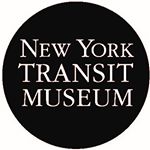
New York Transit Museum
New York Transit Museum is one of the top influencer in United States with 56039 audience and 1.5% engagement rate on Instagram. Check out the full profile and start to collaborate.
Auditoriya
56k
Engagement Dərəcəsi
1.5%
Kanal Hesabları
New York Transit Museum
Lent

In a subway system as complex as New York City’s, there must be Read More

#TodayinHistory: #OnThisDay in 1950, the Brooklyn Battery Tunnel, Read More
Today is #WineDay! Carry your favorite bottle to the dinner party Read More

Happy birthday, Brooklyn Bridge! When the #BrooklynBridge opened Read More

Built by the Clark Equipment Company from 1938 to 1940, the BMT B Read More

While our focus may often be on our buses and trains, plenty of o Read More

The #NYTransitMuseum knows a thing or two about unconventional ve Read More

#TodayinHistory: #OnThisDay in 2004, the newly renovated Stillwel Read More

#DidYouKnow that before the electrification of cars in the early Read More



